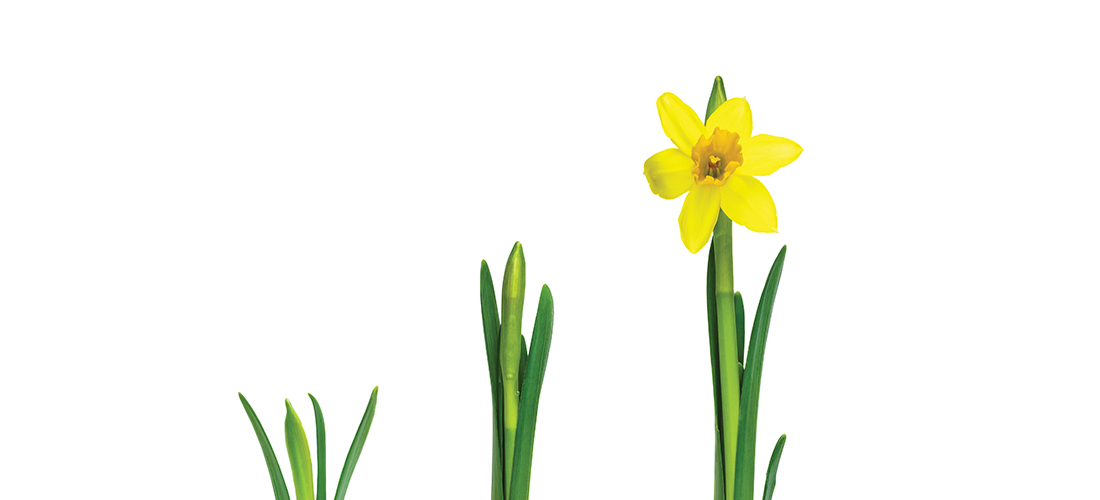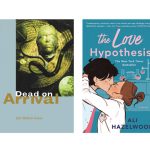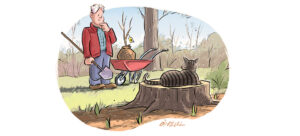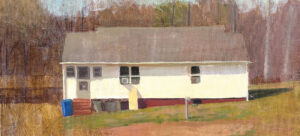
Ode to a Daffodil
Acres of yellow blooms beckon the splendor of spring
By Lindsay Morris
In the evening Alice sat on her grandfather’s knee and listened to his stories of faraway places. When he had finished, Alice would say, “When I grow up, I, too, will go to faraway places, and when I grow old, I, too, will live beside the sea.”
That is all very well, little Alice,” said her grandfather, “but there is a third thing you must do.”
“What is that?” asked Alice.
“You must do something to make the world more beautiful,” said her grandfather.
“All right,” said Alice. But she did not know what that could be.
— Miss Rumphius by Barbara Cooney

I remember the morning as if it were yesterday. It was early, oh so very early. Much too early for my 8-year-old, growing body. With every ounce of my being, I silently commanded my spirit to ignore the telltale signs of the low beams of light seeping through my blinds. I ordered the gentle tugging on my shoulder to relegate its dictates to the deep recesses of my dreams. Within moments, the strong hands that tugged also separated me from the comfy sanctuary of flannel sheets that enveloped me and jarringly forced me to welcome the earliest moments of dawn.
And then the magic words were spoken: “It’s time.” Just as a hypnotist awakens his client from the edge of consciousness, I was completely awake and reminded of our task at hand. In a trance, I methodically enumerated my to-do list, putting on work boots, donning gardening gloves and grabbing whatever was accessible on the kitchen counter to fuel what I knew would be a long day ahead.
Opening the back door of my childhood home has always brought about visions of Wonderland or Terabithia, and that morning was no different, other than the sun shining much lower and more intensely through the dense trees that hedged our little world of Avalon Loop. You see, Avalon was a world my sisters and I firmly believed God created for our imaginations. The animals of the realm, while not visible, could certainly be heard talking among one another. From the swans’ snorts and the ducks’ cackles on the pond to the neighing of our horse, Ike, son of Tina, and the low whimpers and barks of our dogs, all were offering their morning greetings. But time with furry and feather friends would have to wait. It was as if they, too, had heard the summons, “It’s time,” as my father walked by with tools and bags in hand.
I followed his lead with confidence, knowing that he always had a plan prepared with precision and efficiency. I also knew there would be rules that I must follow, but that is how order thrives in the kingdom of Avalon. My father was a Renaissance Man, one who could dream, create and implement with scientific acumen — a rare man of beauty and science. As much as my young mind could conceive, I knew his goal was never to disrupt nature, but instead to curate it and if possible, unveil and highlight its beauty.
But that warm October morning, I feared our task that day may not reach completion as I observed the mound of bulbs at our feet. My father, a patient and determined man, seemed nonplussed and content to get started. According to my father, we had around one thousand bulbs to plant alongside the driveway and the north end of the pond. Listening closely, I absorbed with great care his meticulous instructions. He demonstrated how to push the spade into the soil just enough so that the bulb was covered but would still have room to adequately grow and absorb the earth’s nutrients. I worked alongside him, mirroring as closely as possible how he broke the earth. With his small spade, he calculated the distance, spaced and designated a home for each bulb. His plan was masterful, and it played out like a lyrical dance as we glided down the hillside.
The minutes quickly turned into hours. Only when the sun began to dim over the pond did it call out to the swans, ducks and geese, who echoed in unison to the fading sunlight. As I surveyed our work, a sense of pride filled my entire being. With a reassuring smile, my father glanced over at me, tired, but expectant. While my arms and limbs were heavy with fatigue, it could not rival the growing anticipation of what I knew the spring would reveal.
And spring could not come soon enough for my impatient spirit. I remember assessing the soil on a daily basis, practically pleading with it to offer any sign of life.
The winter of 1990 was a particularly cold one, and those first shoots of bright spring green seemed as though they would never appear. I imagined myself to be an evangelist, praying and wooing those tiny bulbs that we had so carefully sown to rise from the earth. I wasn’t even particularly sure what variety of flower they were because I had never asked my father. Instead, I hoped to be surprised by what would spring forth from the work of our hands. I wanted their beauty to be unveiled in their own timing. And it wasn’t long after their green shoots greeted the sun that I noticed a yellow tint to a few of them. However, as quickly as my synapses fired this message to my brain, my heart sank with great dismay.
Yellow: The color of sickness, the color of school buses and pencils. For me, it was more than just a color that clashed with my golden blond hair, impeding me from wearing anything in its hue, but it also made me anxious and uneasy about everything when it surrounded me. For some reason, yellow fully dilated my senses. You see, colors have always had a way with me. I have synesthesia, in which colors dictate my mood, my taste and my sense of well-being about the world. After all these months of anticipatory excitement, I was now utterly uncertain what this initial indication of yellow would reveal. However, just a few mornings later in February, I was awakened to an unseasonably warm and sunny day. Rushing outside, I expected to be greeted with sickness at the sight of so much yellow.
However, nothing could have prepared me for what my eyes encountered and the response that followed. If heaven could be so adorned with rays of golden and lemony yellows, and even yellows marked with golden orange halos, I would have thought that I was in the realms of glory. I willingly abdicated my senses and gazed upward to the sun and offered it gratitude for the beauty that it had nurtured and now reflected. Yellow no longer triggered painful anxieties to rush through my veins, but instead lovingly beckoned me to sit among it to just soak in its splendor.
And the splendor of our daffodils has grown exponentially over the years. More than 30 years later, their yellow blooms have become an intrinsic part of our family’s life, just as they have become the centerpiece around many occasions with family and friends. Not only are they the foremost indicator of spring’s arrival, but each year, without fail, they celebrate my March 1st birthday with grandeur. They have marked with great intentionality baptisms and homecomings.
Now, more than three decades later, not only has my memory of that day remained vividly intact, but with each passing year numerous events and moments with the daffodils have been added to the storehouse of my memories. You see, over the course of three decades, the daffodils have been divided and spread over and under and around our property. Easily covering five or more acres, adorning both entrances and even abounding in great numbers around the loop road surrounding our pond, their numbers now add up to more than 25,000 flowering blooms. The magic of that day has turned into a proliferation of beauty that not only welcomes but befriends all who enter the realm of Avalon each spring. Their beauty, and the work of our hands, has been a reminder of what planting and nurturing can create.
This is how Miss Alice Rumphius from Barbara Cooney’s beloved children’s book learned to make the world more beautiful by spreading her lupine seeds across her home and down by the sea. Similarly, my father, on that unseasonably warm October day, showed me with love and patience how beauty can be elicited and magnified in unexpected ways through the vision of a daffodil bloom. OH
Though living alongside the Mayo River in Rockingham County, Lindsay Morris is connected to Greensboro through the spirit of Howard Coble and her love of the local arts scene.





